Lassen Volcanic National Park showcases earth’s powerful forces. Every rock in the park originated from a volcano. All four types of volcanoes -shield, composite, cinder cone, and plug dome, can be found in the park. Lassen Peak is one of the largest plug dome volcanoes in the world. A plug dome volcano forms when the highly viscous lava is extruded out of the ground and solidifies in place, plugging the volcano. In a later eruption a steam blast typically shatters the plug, creating an avalanche of melted snow and rock. Lassen last erupted off and on between 1914 and 1921.
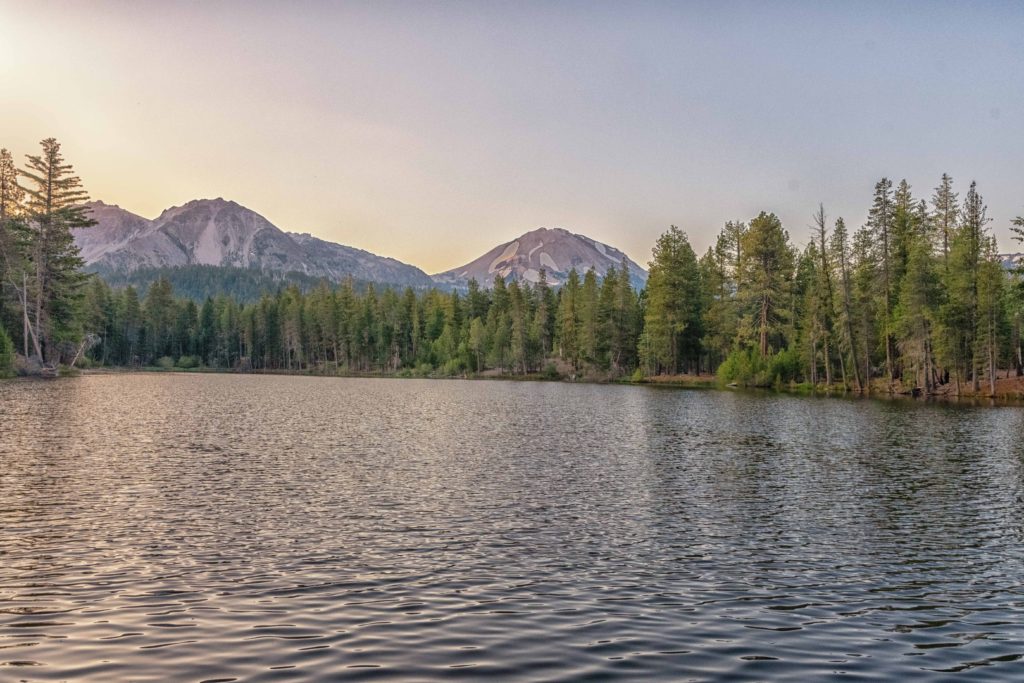
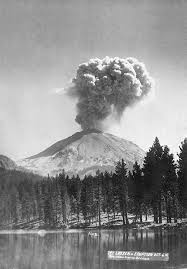

Joe hiked to the peak at 10,463 feet in elevation. The Lassen Peak trail is a 5-mile hike with more switchbacks than he has ever experienced before. It was tough going above 9000 feet, requiring lots of water and air breaks. The trick to high-altitude hiking is taking a break prior to needing a break. Anytime you start breathing heavily or getting thirsty, find a rock to sit on and get some oxygen (breathe regular air until your heart and respiration rates go back to normal) and water. You can’t push through altitude sickness, you can only prevent it.
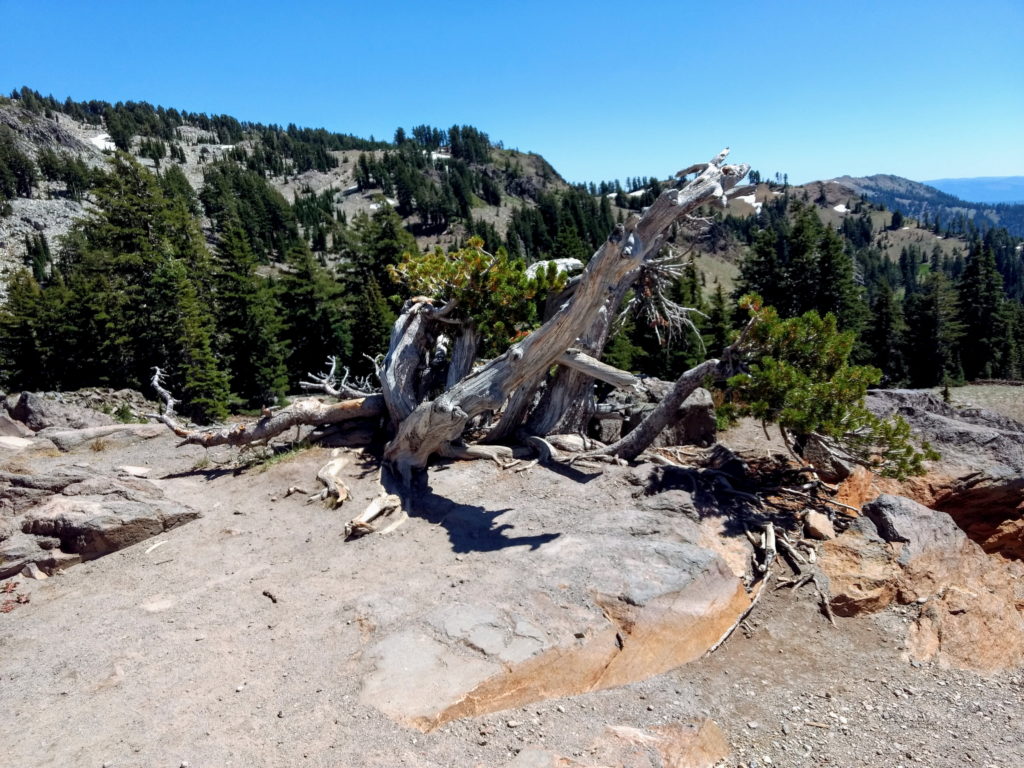
Today Mt Lassen is quiet, but is still considered active. There are several areas of the park where volcanic activity is readily apparent. You can find mudpots, steaming ground, fumaroles, and sulfurous gas emissions. Unfortunately for us the short hike to the best area to see this activity (Bumpass Hell) was closed for trail improvements while we visited. We did, however, stop by Sulfur Works, which is roadside, to see mudpots, boiling cauldrons, and (unfortunately) smell sulfurous emissions. It reminded us of Yellowstone National Park.
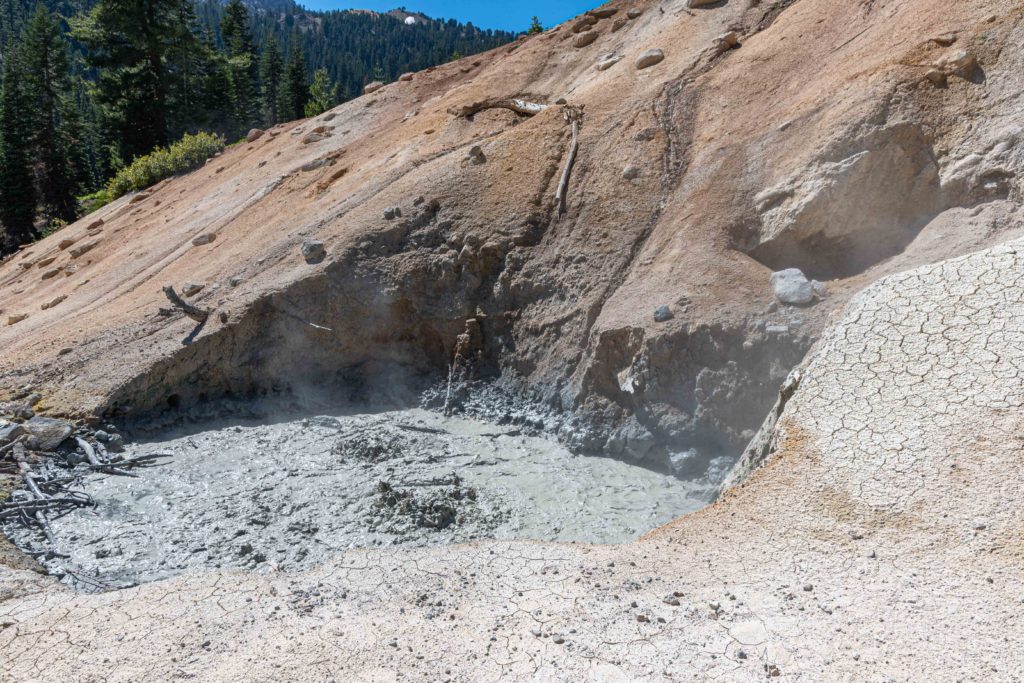

Whitebark pines are found in the subalpine areas of the Cascade Mountains and other high elevation mountain ranges in the western US and Canada. They are typically the highest elevation pine trees found. We have seen them several times in our travels this summer. They have a symbiotic relationship with Clark’s Nutcrackers. The seeds of the whitebark pine provide food for the Clark’s Nutcracker. The nutcrackers collect seeds and cache them in various places to retrieve when food is scarce. These caches happen to provide good places for seed germination and survival of the seedlings, so whitebark pines tend to be found in small clumps. The whitebark pine is an endangered species due to increasing prevalence of white pine blister rust and pine mountain beetles. This increase in disease and pests can be traced to fire suppression efforts of the last 100 years, which allowed diseased and damaged trees to survive and pine beetle populations that should have been periodically reduced by fire to thrive.
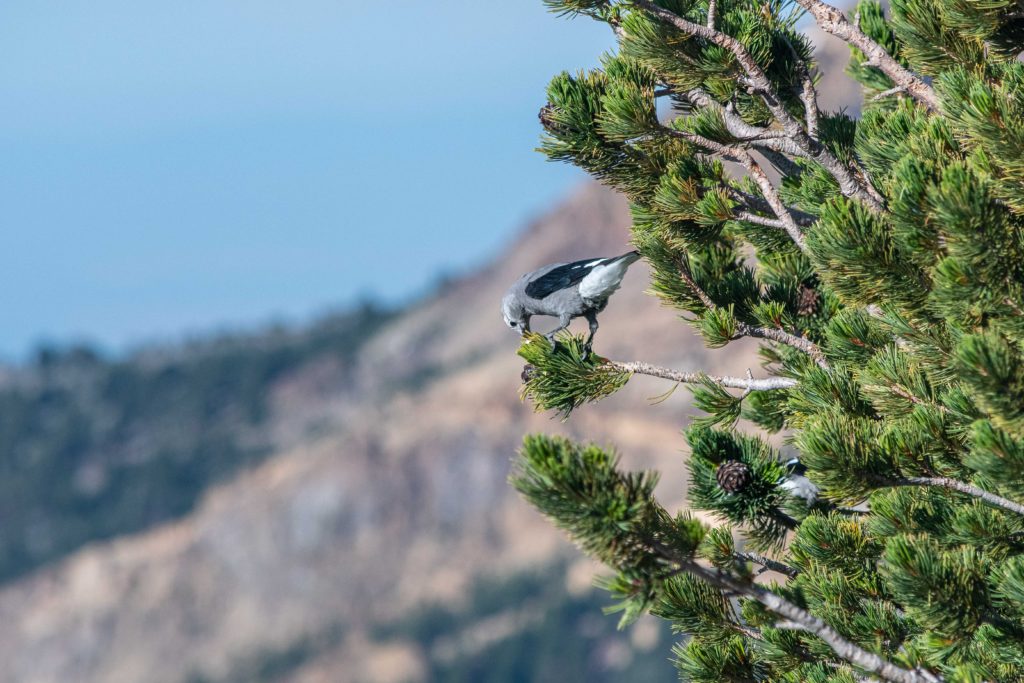
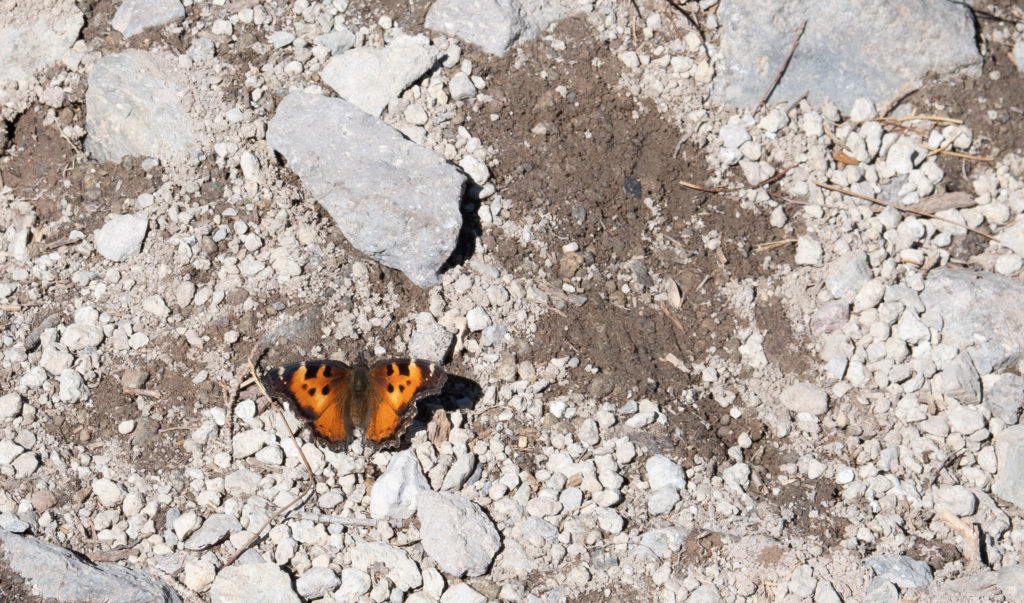
While we were visiting Mt Lassen we were fortunate to observe a California Tortoiseshell migration. These butterflies settle in an area, make lots more butterflies, eat up all the food, then migrate to a new area and do it all again. They were everywhere we went above 7500 feet, even at 10,463 feet on top of Lassen Peak.
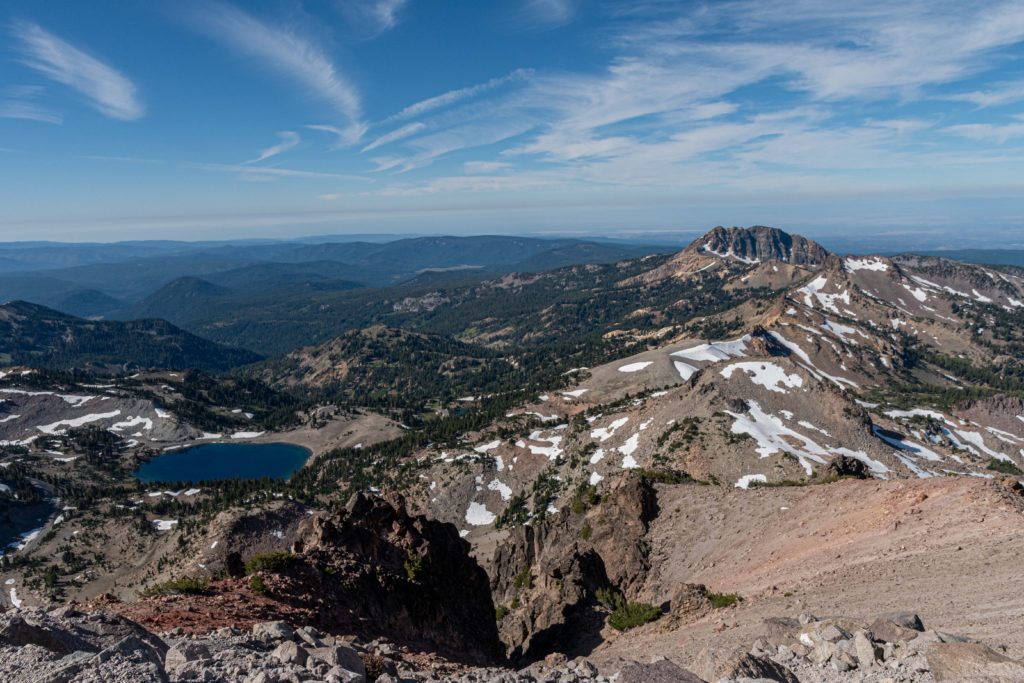
Brokeoff Mountain is perfectly described by its name. Part of the mountain just broke off! It happened about 350,000 years ago when local volcanic activity shifted from Brokeoff Mountain to Mount Lassen. The rocks on Brokeoff Mountain were easily and quickly eroded due to their chemical make-up (related to past volcanic activity). That is as far as our understanding goes about how part of the mountain broke off.
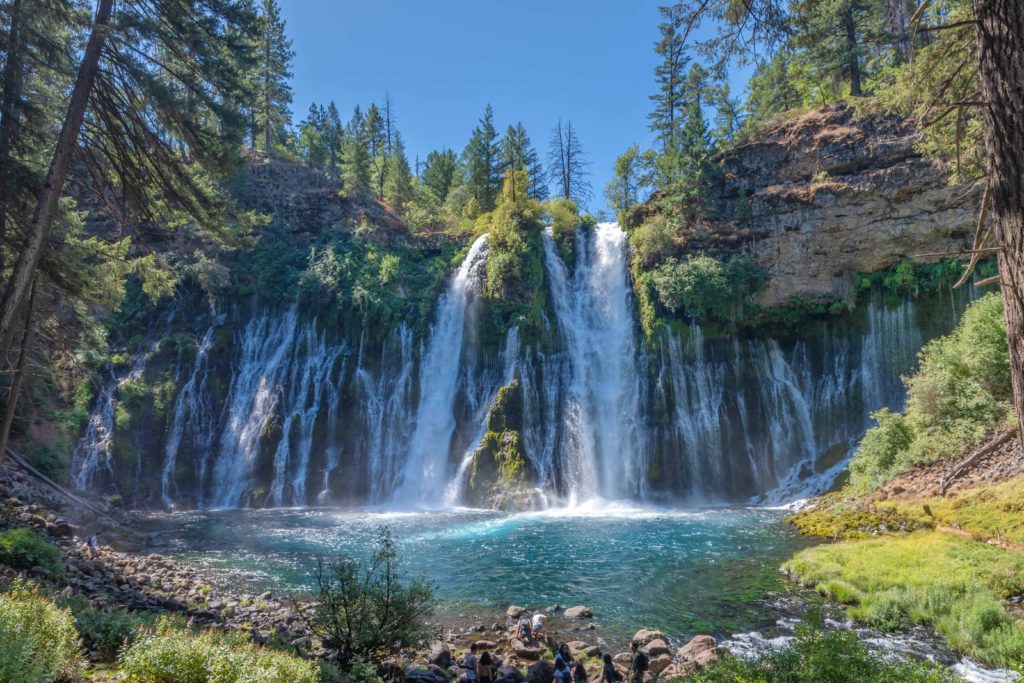
About 20 miles from our campground we found McArthur-Burney Falls Memorial State Park. Its signature feature is Burney Falls, probably the most beautiful waterfall we have seen. By the time we visited in mid-August all of the water coming over the falls was from an aquifer. In spring and early summer the aquifer flow is enhanced by snowmelt from nearby mountains. What makes this waterfall beautiful is the multiple streams of water from multiple levels across the entire cliff face.
We have seen many volcanoes this summer as we traveled down the Cascade and Sierra Nevada Mountain ranges. It is awesome to see how our earth builds these mountains and then often blows them up. It reminds me of a young child with blocks, building a tower and knocking it down. Finding evidence of the eruptions miles from the caldera has demonstrated the power and violence of the eruptions. This cycle has been going on for millions of years in the Lassen Volcanic Park area. This is a great park to visit and learn about volcanoes.